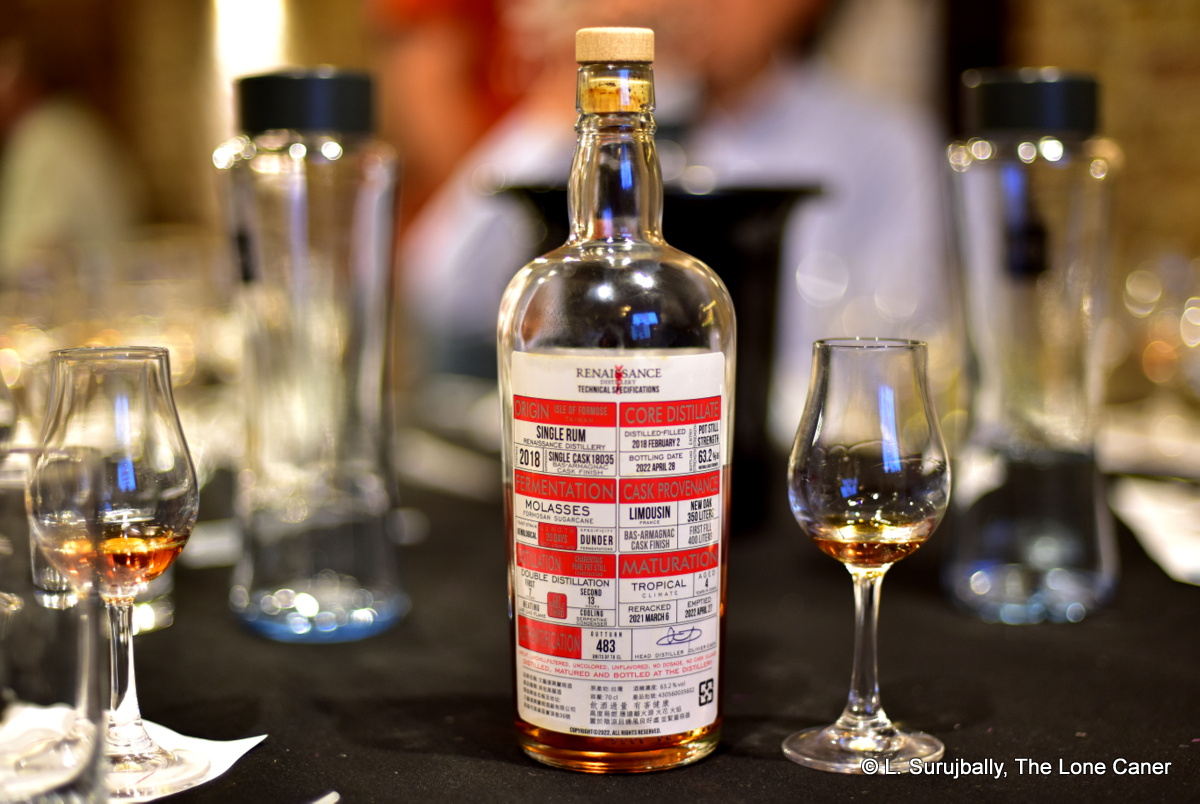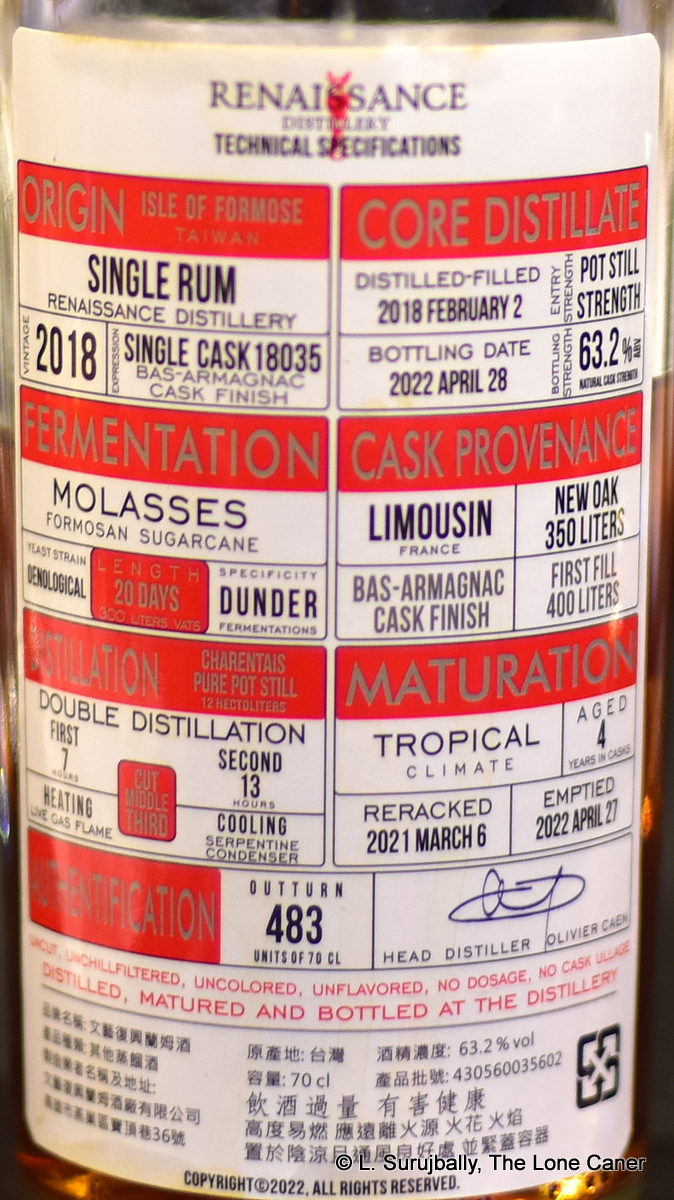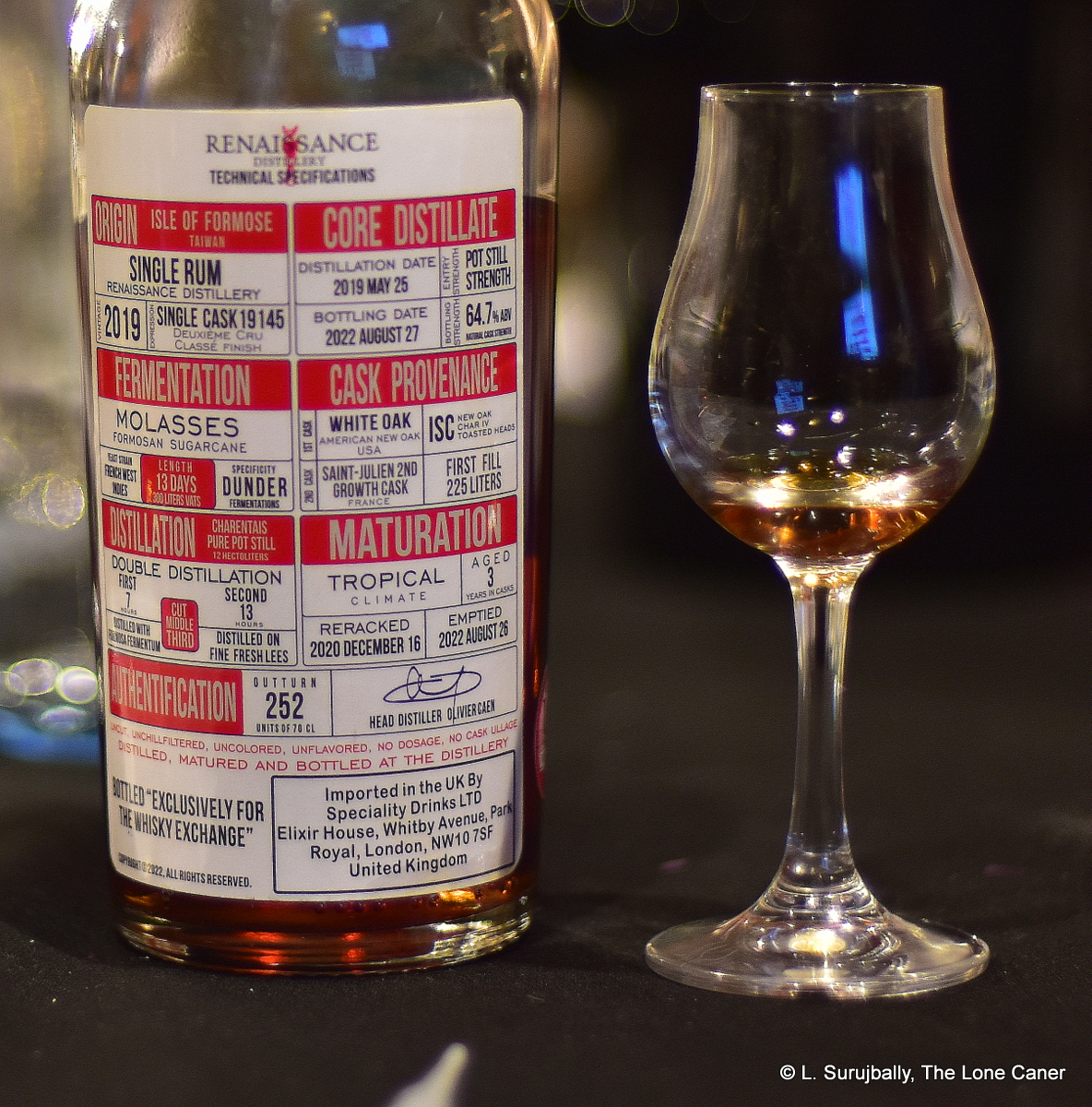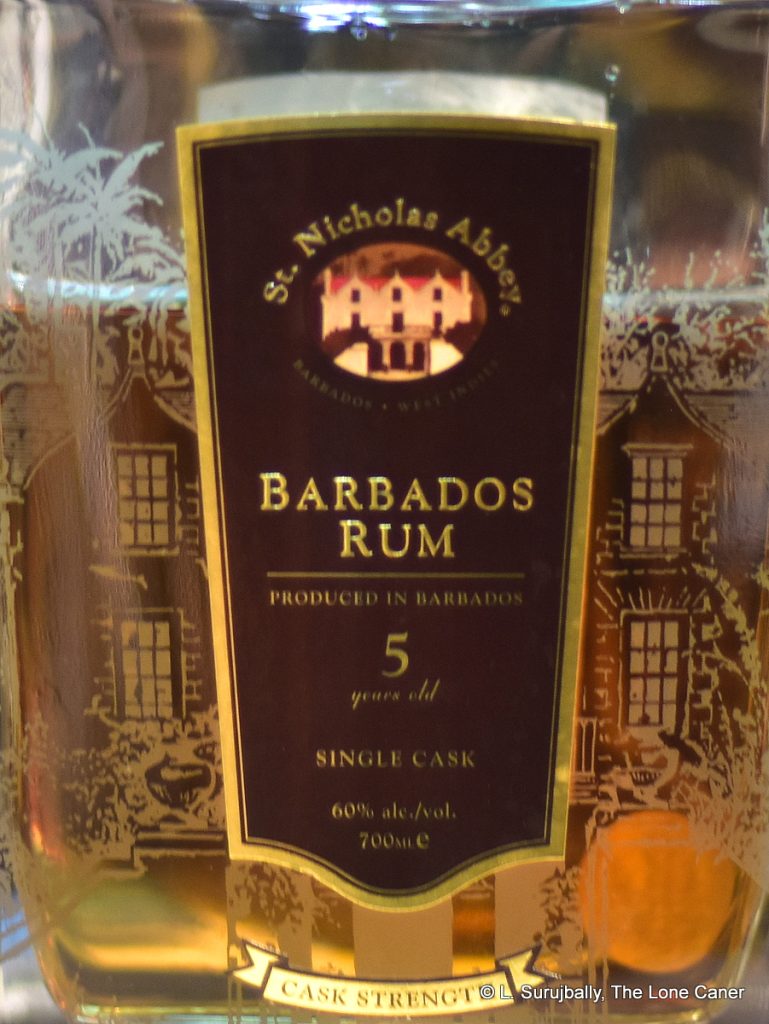In the last review we looked at a product from Romero Distilling, a small and relatively new-ish distillery in Calgary which has the distinction of focusing almost exclusively on making rums (of all kinds). At first blush it seems to conform to the standards of many occasionally unfocused local distillers who are still playing around trying to find the perfect groove: their “Dark” rum left me somewhat dissatisfied and mostly indifferent (spiced rums not being my thing for reasons I went into some detail in that review), and while I didn’t mention it, the “Amber” — which I own, opened and tried at home — hasn’t turned my crank much either.
The Sherry Finish Cask Strength Rum, on the other hand, is an entirely different animal, and an order of magnitude better than either of those — it quite literally left me looking happily at my glass, wondering whence this thing had sprung, and completely unwilling to stop trying it. Now, it’s a pot-still 1200-bottle limited edition 57% ABV rum without any spices, colourants or additives, so right away it has a better starting point than the other two; it’s aged for two years or so in ex-Woodford Reserve barrels and then another two-plus in newly emptied ex-Oloroso sherry barrels brought over from Spain – that to my mind makes it a double aged (not a finished) rum, but whatever…the important thing is, what comes out the other end is to my mind, really impressive.
First of all there’s the way the nose opens. Compared to the low strength and rather thin aromas of its spiced sibling, this packs a solid punch: it presents some woody and tannic notes, with solid sweet caramel, chewing gum, toffee, molasses and a delicate hint of a cinnamon-flavoured unsweetened mocha. Not too much fruitiness here – more dates and coconut shavings – but a fair amount of cereals, rye bread, cardboard and crushed almonds. Really great smells, and one that’s worth keeping around for more than just the time it takes to have a sip or three and move on.
 When tasted, it continues well: hot fresh pastries like pine tarts or pecan pie start the show, and here some fruit start to make themselves noticeable: ripe and heavier ones like sapodilla, plums, prunes and some apricots, with flashes of molasses and honey (love that). There’s even the slight trace of a good brie, some olive oil, rotten lemons, and something savoury lurking in the background, as if it is trying to channel a raw clairin, or a tequila. The finish is also quite good, lasting a long time and wrapping things up with salt caramel, coffee, some brininess and those fresh baked pastries.
When tasted, it continues well: hot fresh pastries like pine tarts or pecan pie start the show, and here some fruit start to make themselves noticeable: ripe and heavier ones like sapodilla, plums, prunes and some apricots, with flashes of molasses and honey (love that). There’s even the slight trace of a good brie, some olive oil, rotten lemons, and something savoury lurking in the background, as if it is trying to channel a raw clairin, or a tequila. The finish is also quite good, lasting a long time and wrapping things up with salt caramel, coffee, some brininess and those fresh baked pastries.
To say I was “merely pleased” is understating matters. I was damned impressed. The rum seemed so good on the first try that not only did I keep the glass going for the next two hours, but as soon as I got home, went straight out and bought a bottle online (I’m told that the rum has just gone into general release in Alberta). What’s also really interesting is that for 57% ABV, double the ageing and no spicing it up, it only costs C$7 more than the C$75 Dark with which I had previously been relatively unenthused.
So, in the final analysis, although I have many more rums from north of 49 to try, so far this is one of the best Canadians I’ve yet come across, the highest scoring to date. It’s not a copy of some Caribbean profile, doesn’t seek to emulate noble sires from hotter climes, but is completely, calmly, resolutely, itself. It adheres to the profile of rum while providing just enough kinks and twists to show that the makers knew exactly what they were doing when they made it. It shows how something better than the dronish herd of mass produced tipple can be made here, and hopefully sell, and while I’m sure over time other rums will inevitably eclipse it…for now, it remains a high point of the Canadian rum scene and deserves serious attention.
(#1034)(86/100) ⭐⭐⭐⭐
Other Notes
- The rum was awarded “Best in Class” at the 2023 Alberta Beverage awards (in a three way tie). Given the judges’ primary expertise, what it was rated against, and what else was on the list of candidates and winners, this is not an award to be taken completely seriously, and the scores were, shall we say, somewhat excessively enthusiastic. But it had to be mentioned.
- Company details can be found in the review of the Romero Dark
- The rum is a blend of several barrels and an outturn of 2000 bottles.
- A hydrometer test comes out at 56.8% ABV, so it’s clean from that perspective (and tastes that way, but I checked anyway)
- The company runs tour, tasting and blending sessions at its facility in Calgary, which I’ve heard from friends of mine who went, are quite good.
- There’s a fair bit of marketing copy on the website and other promotional materials, about rum running in Canada during Alberta’s own Prohibition era, but this is local colour and has no bearing on Romero directly.







































